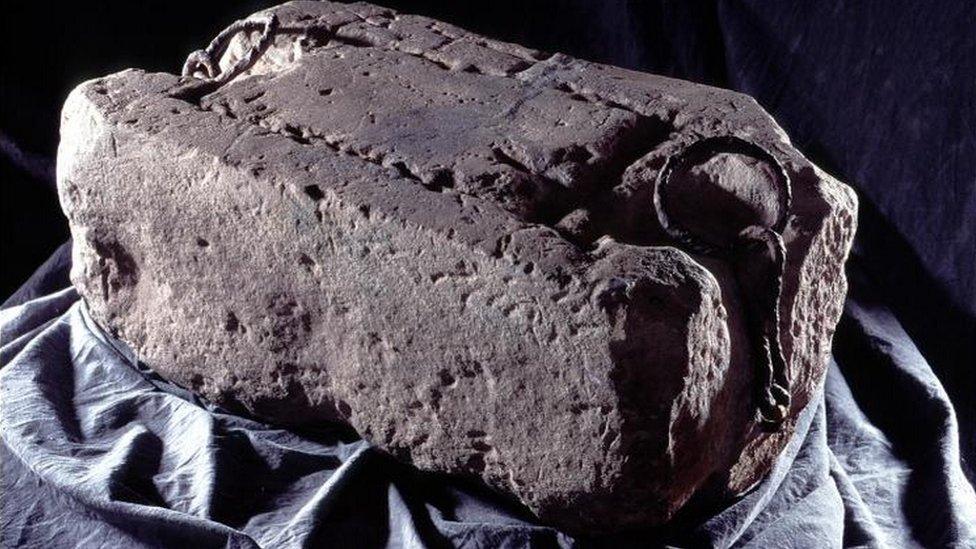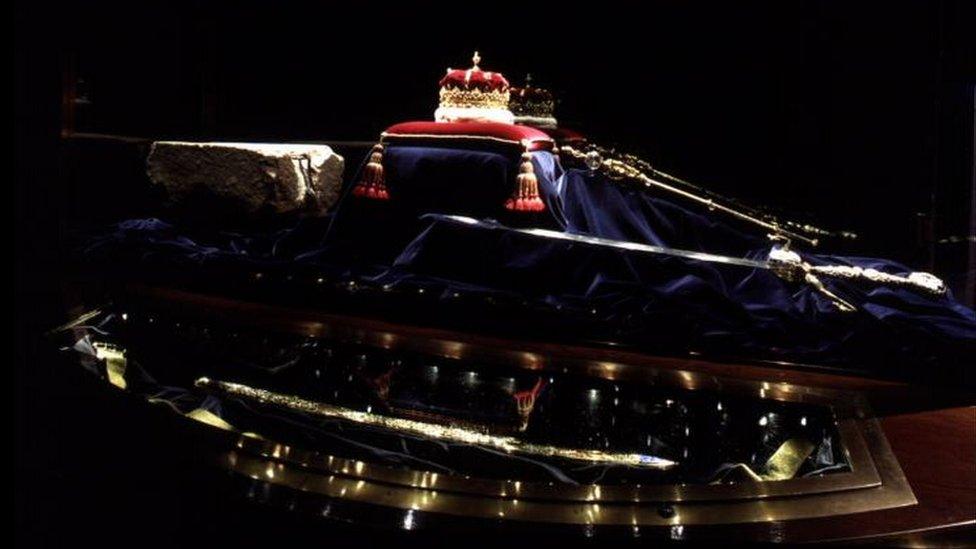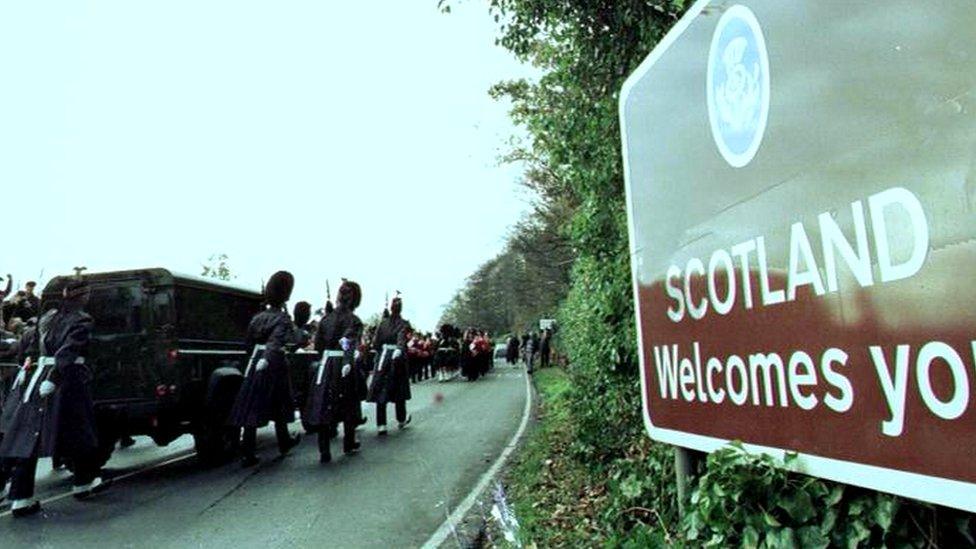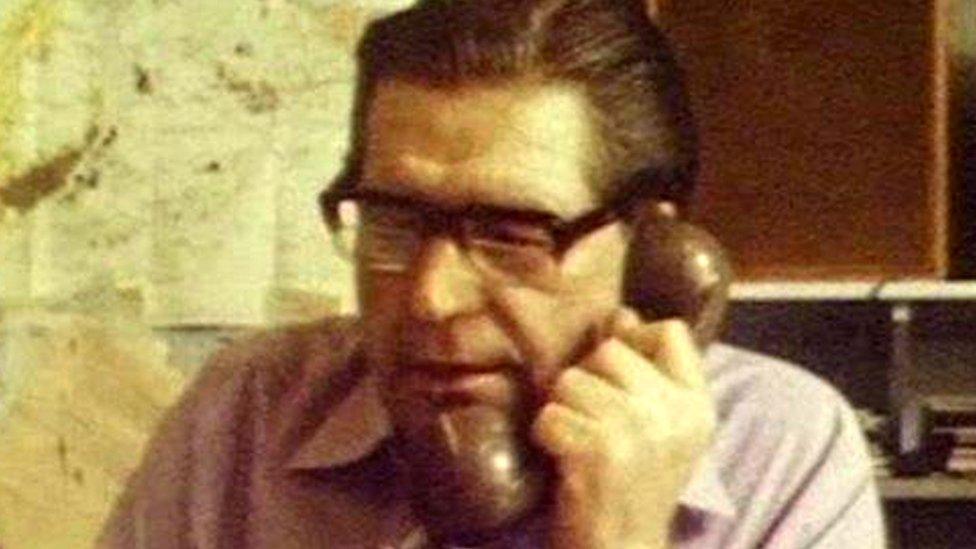The Stone still waiting for its final destiny
- Published

The stone was returned to Scotland in 1996
On St Andrew's Day 1996, Scotland made a date with destiny - the Stone of Destiny. Seven hundred years after King Edward the first removed the stone, it was officially returned.
Now it can be seen in Edinburgh Castle but there are calls for it to move to a new home further north- in Perth. Twenty years on, Elizabeth Quigley looks back on the day she saw the stone come home.

In 1996, the Stone of Destiny began its long journey from Westminster Abbey home to Scotland.
The journey was filled with pomp, ceremony and a host of dignitaries - including the man who made it all happen, the then Scottish Secretary Michael Forsyth. He said the decision to bring it back was a "no-brainer".
Now Lord Forsyth of Drumlean, he said: "I remember my younger daughter saying to me 'but dad, it was stolen. Surely it was ours and it should be returned?'
"And I couldn't get round that question. So I decided to ask the prime minister to ask the Queen and it was decided it would be returned."
"It was a no-brainer. But what really irritates me is that people think it was some kind of political stunt that would save us from oblivion.
"It was pretty obvious that the Tories were going over a cliff in the subsequent election in 1997. It was also the 700th anniversary of Edward I having taken it and it seemed an appropriate moment to return it."


The Stone was stolen from Westminster Abbey in the 1950s
The stone had been returned to Scotland before 1996 in a rather more low-key, very unofficial way.
In 1950, four Glasgow University students decided it was time it should come back to Scotland.
Ian Hamilton, Kay Matheson, Gavin Vernon and Alan Stuart headed to London and, in the early hours of Christmas Day, entered Westminster Abbey.
The group succeeded in removing the stone from underneath the coronation chair but in doing so they dropped the heavy piece of red sandstone and it broke in two.
But they managed to take it from the abbey, load it into a car and successfully head north back across the border despite roadblocks and searches.
The police never did find it. Eventually the stone reappeared at Arbroath Abbey in April 1951 covered in a Saltire - before it was returned to Westminster.
No prosecutions
The home secretary at the time said it wasn't in the public interest to prosecute those involved.
The physical task of bringing it back to Scotland in 1996 was also not an easy one.
Richard Welander, head of collections at Historic Environment Scotland, was part of the team which officially removed the stone from Westminster Abbey 20 years ago.
"The tricky part was getting it out of the coronation chair," he said. "The coronation chair is the oldest mediaeval chair in the abbey.
"Every king and queen since Edward I has sat on that chair. It's a wonderfully elaborate chair. The stone is embedded in the seat of the chair and we had to lift it with a block and tackle.
"It was a very delicate operation, bringing it up inch by inch. That's why it took several hours from eight until two in the morning."


Twenty years on there are now calls for it to travel a little further north to Perth.
Ian Miller, leader of Perth and Kinross Council, said: "As part of a bid for the city of culture in 2021, we've made an application to the commissioners of the stone, to bring the stone back to Perth to its historical home.
"I think in this day and age, security is obviously an issue and the most appropriate location would either be in the Perth Museum and Art Gallery or in the refurbished Perth City Hall where we can provide the necessary security to house the stone."
The Stone of Destiny is also known as the Stone of Scone. A replica can be seen in the grounds of Scone Palace, not far from the centre of Perth.
But is the stone in Edinburgh Castle even the real Stone of Destiny?
When the stone was removed from the Abbey in 1950, there were rumours that copies were made in Scotland.
Another theory is that the stone which Edward I took in 1296 was not the real stone and that the monks at Scone Palace hid the real stone in the river Tay or buried it on Dunsinane hill.
And it doesn't end here.
The stone will go back to Westminster Abbey temporarily for future coronations - and that might start a whole new story.
- Published4 February 2016

- Published8 July 2013
